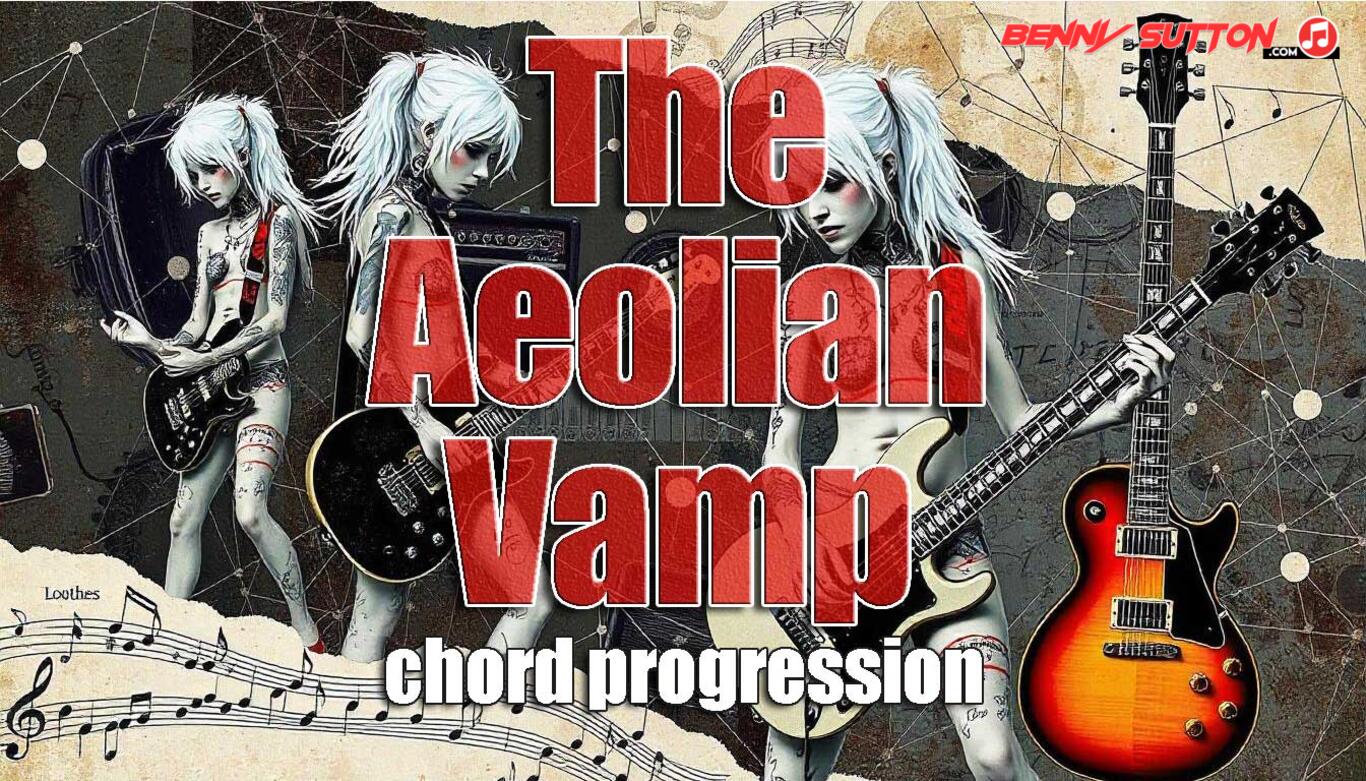Natural minor mode with ♭6 and ♭7; melancholy, song-friendly.
Aeolian Mode (Natural Minor)
Parentage: 6th mode of the Major Scale
Interval Formula: W – H – W – W – H – W – W
Degrees: 1 – 2 – ♭3 – 4 – 5 – ♭6 – ♭7
Chords built on degrees: i, ii°, ♭III, iv, v, ♭VI, ♭VII
Structure and Function
Aeolian is the natural minor scale — the foundation of all minor-key tonality in Western music.
It shares its notes with the relative major (a major scale starting a minor third higher) but changes the tonal center to the 6th degree of that parent scale.
Its defining features are the minor 3rd, minor 6th, and minor 7th —
together producing a sound that’s darker and more melancholic than Dorian, but smoother and less tense than Phrygian.
Formula in A Aeolian (from C Major):
A B C D E F G A
| Degree | Function | Interval | Chord | Nashville | Comment |
|---|---|---|---|---|---|
| 1 | Tonic | 0 | Amin | 1 | Root of minor tonality |
| 2 | Supertonic | +2 | Bdim | 2 | Weak pre-dominant |
| ♭3 | Mediant | +3 | Cmaj | ♭3 | Defines minor color |
| 4 | Subdominant | +5 | Dmin | 4 | Minor pre-dominant |
| 5 | Dominant | +7 | Emin | 5 | Weak dominant, no leading tone |
| ♭6 | Submediant | +8 | Fmaj | ♭6 | Dark minor color |
| ♭7 | Subtonic | +10 | Gmaj | ♭7 | Modal cadence tone |
Sound and Character
- Mood: dark, emotional, introspective, and tonal (unlike modal major variants).
- Signature intervals: flat 3rd, 6th, and 7th — all contribute to its plaintive quality.
- Cadence: commonly i–♭VII–♭VI–V or i–iv–V, especially when harmonic or melodic minor variants are introduced.
- Melodic feel: stepwise motion with half steps between 2–3 and 5–6 adds tension and sadness.
Aeolian expresses what listeners typically identify as the “minor key” sound —
melancholy yet deeply musical and flexible across genres.
Use and Application
- Genres: rock, classical, metal, pop, folk, film, and electronic.
- Improvisation: use over minor chords (i, i7, i9) or progressions centered on i.
- Chord–scale pairing: Aeolian → pure minor tonality;
harmonic and melodic minor variants modify it to create stronger dominant resolution.
- Compositional technique: borrowed frequently by major-key songs for contrast (“modal interchange”).
| Song | Artist | Key/Mode | Notable Features |
|---|---|---|---|
| “Stairway to Heaven” | Led Zeppelin | A Aeolian | Classic natural minor lines in solo section |
| “Losing My Religion” | R.E.M. | A Aeolian | Modal folk-pop feel, no harmonic minor lift |
| “House of the Rising Sun” | Traditional / The Animals | A Aeolian | Archetypal minor arpeggio progression |
| “Smells Like Teen Spirit” | Nirvana | F Aeolian | Power chord riff with flat 6/flat 7 motion |
| “All Along the Watchtower” | Bob Dylan / Jimi Hendrix | C♯ Aeolian | Minor vamp with modal color |
| “Mad World” | Tears for Fears / Gary Jules | E Aeolian | Sad but not overly dark; natural minor purity |
Summary
| Attribute | Value |
|---|---|
| Parent Major Key | Starts on 6th degree |
| Tonal Center | Minor |
| Signature Intervals | Flat 3rd, 6th, and 7th |
| Emotional Color | Sad, reflective, tonal |
| Typical Harmony | i – iv – v or i – ♭VII – ♭VI – V |
| Typical Chords | Minor, Minor7, Add9, Sus2 |
| Usage | Rock, classical, folk, cinematic scoring, pop ballads |
